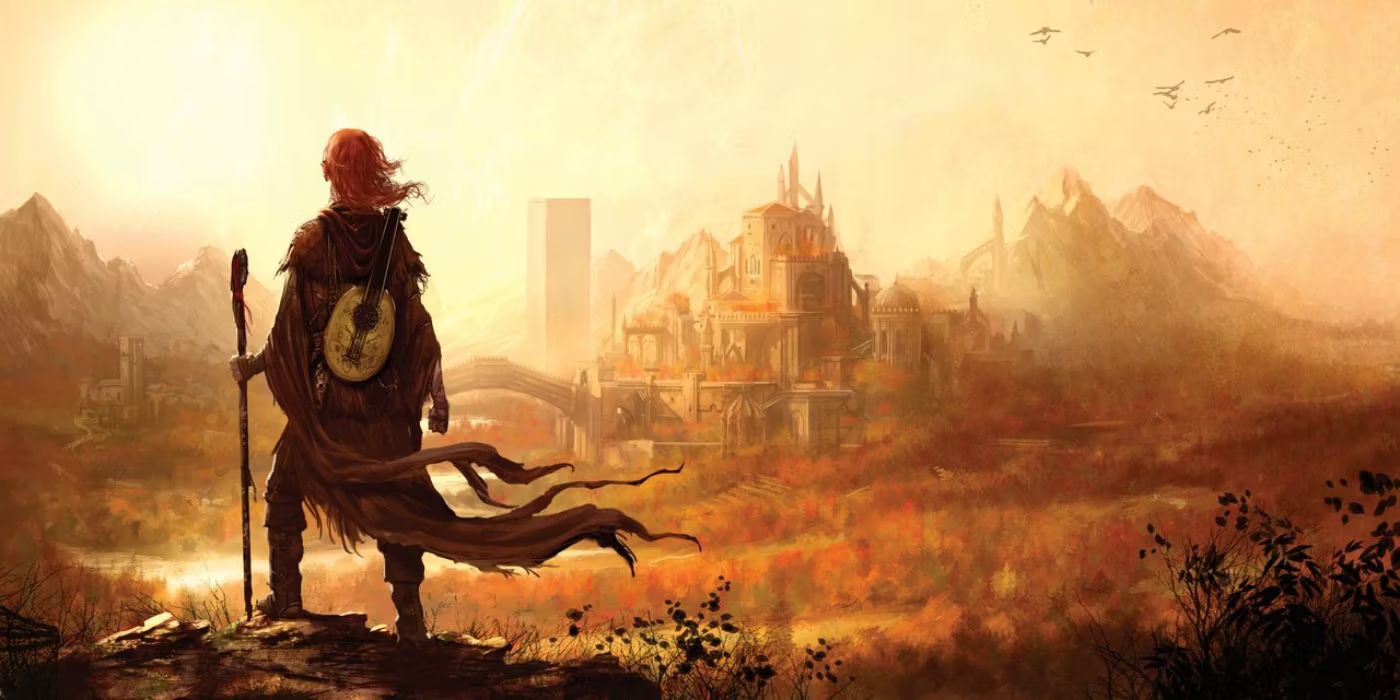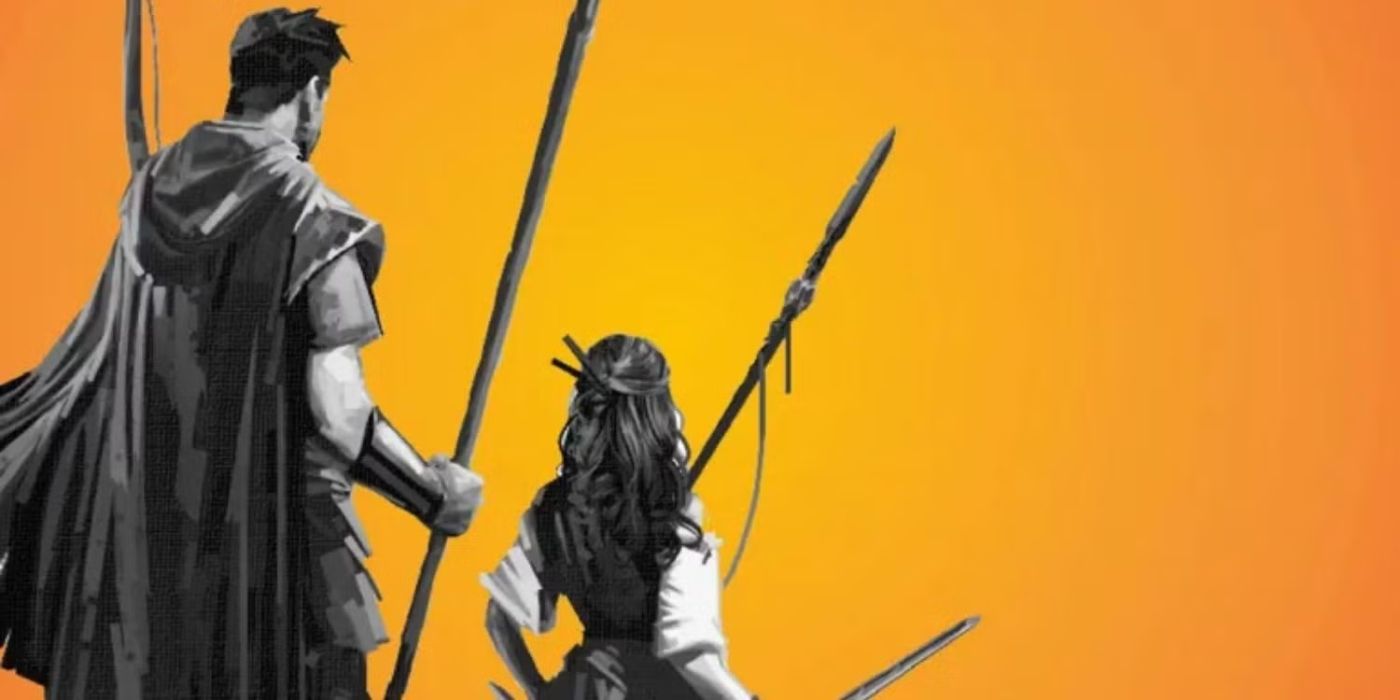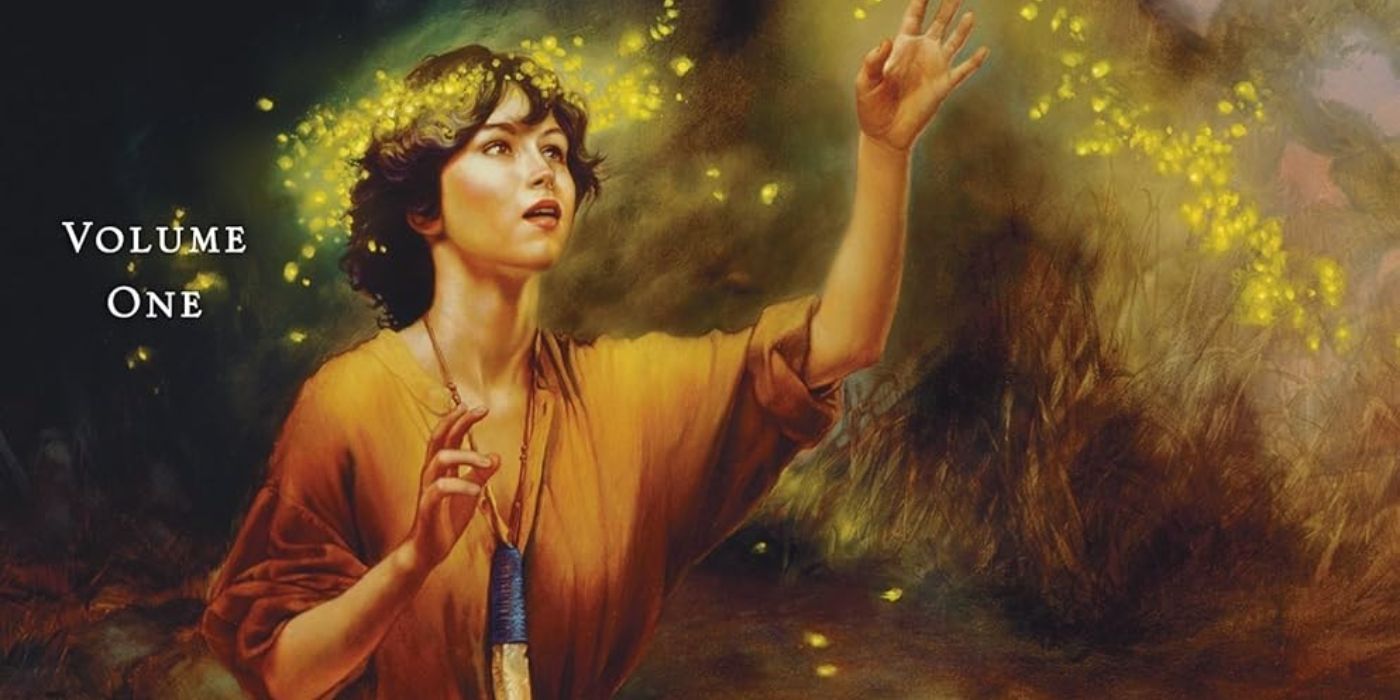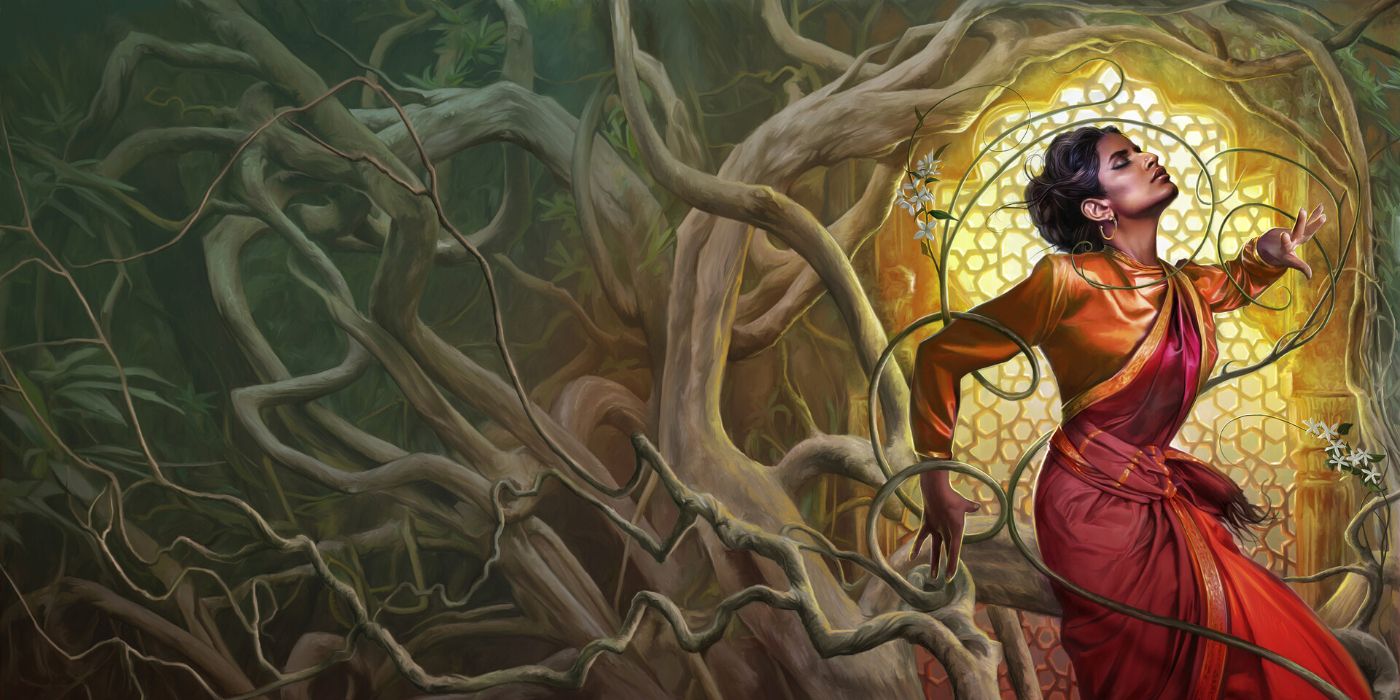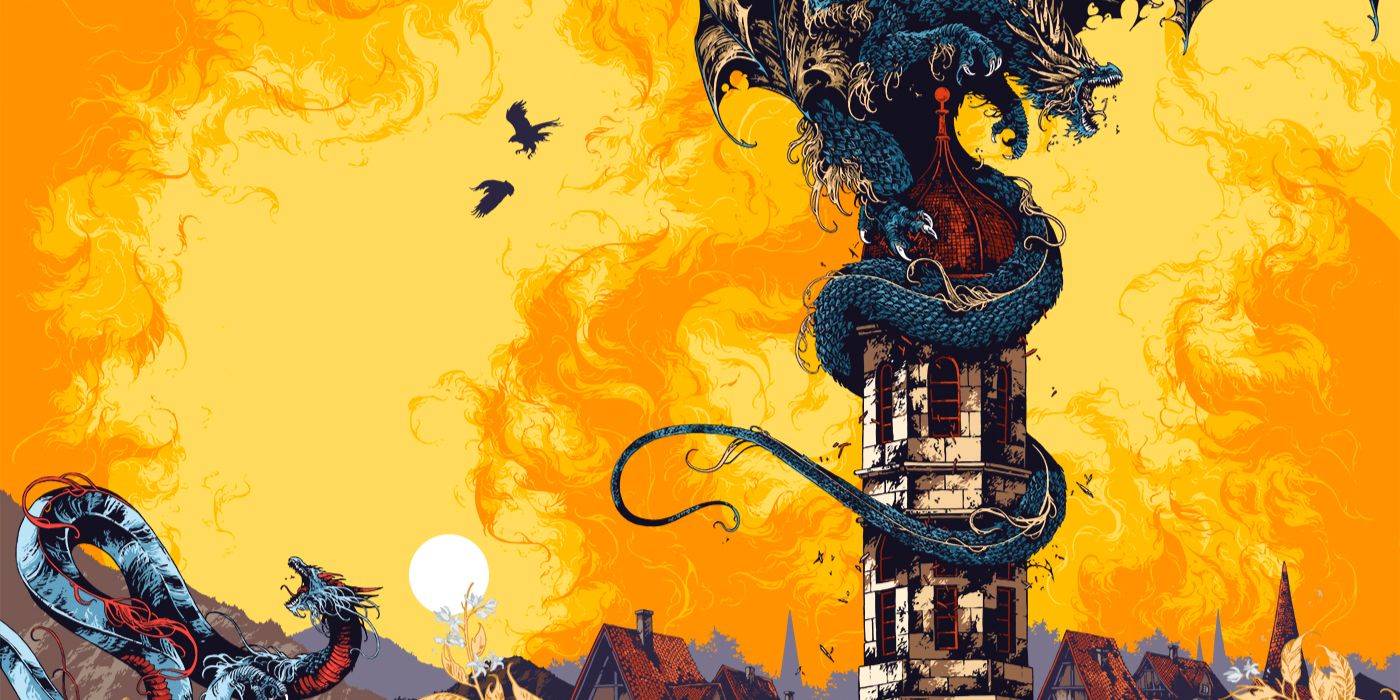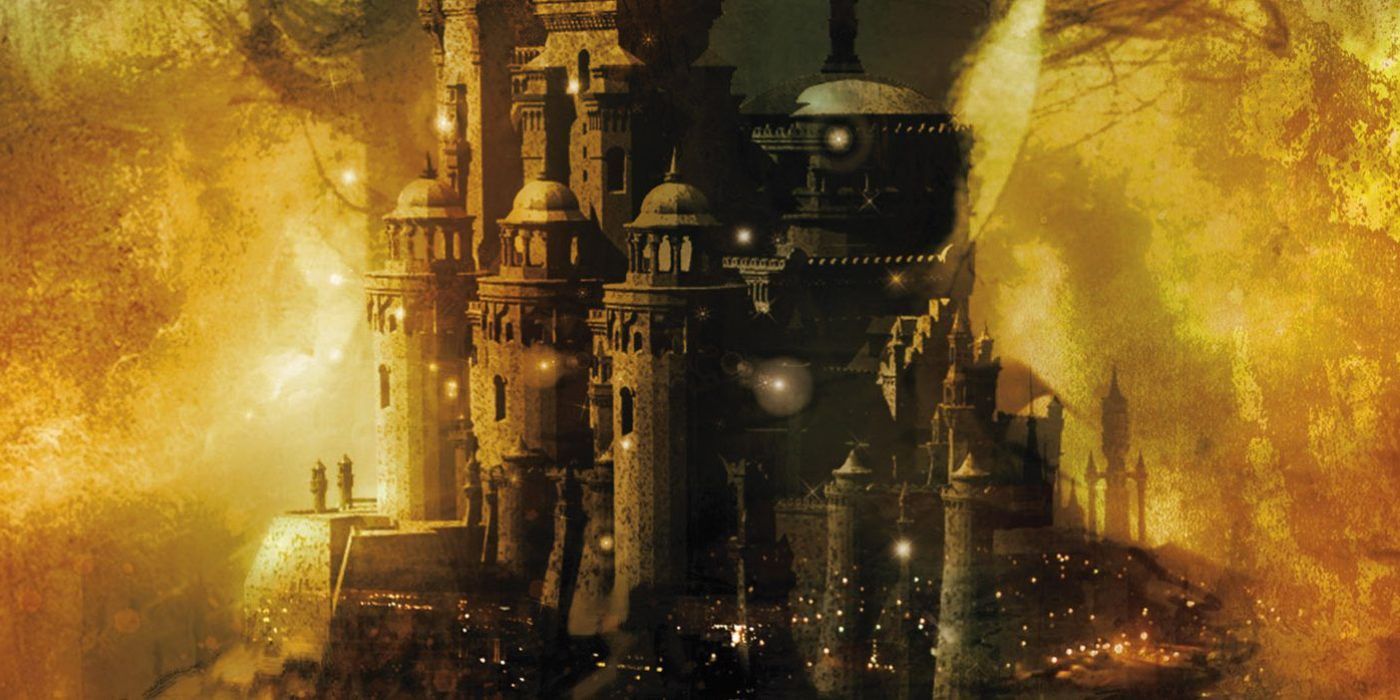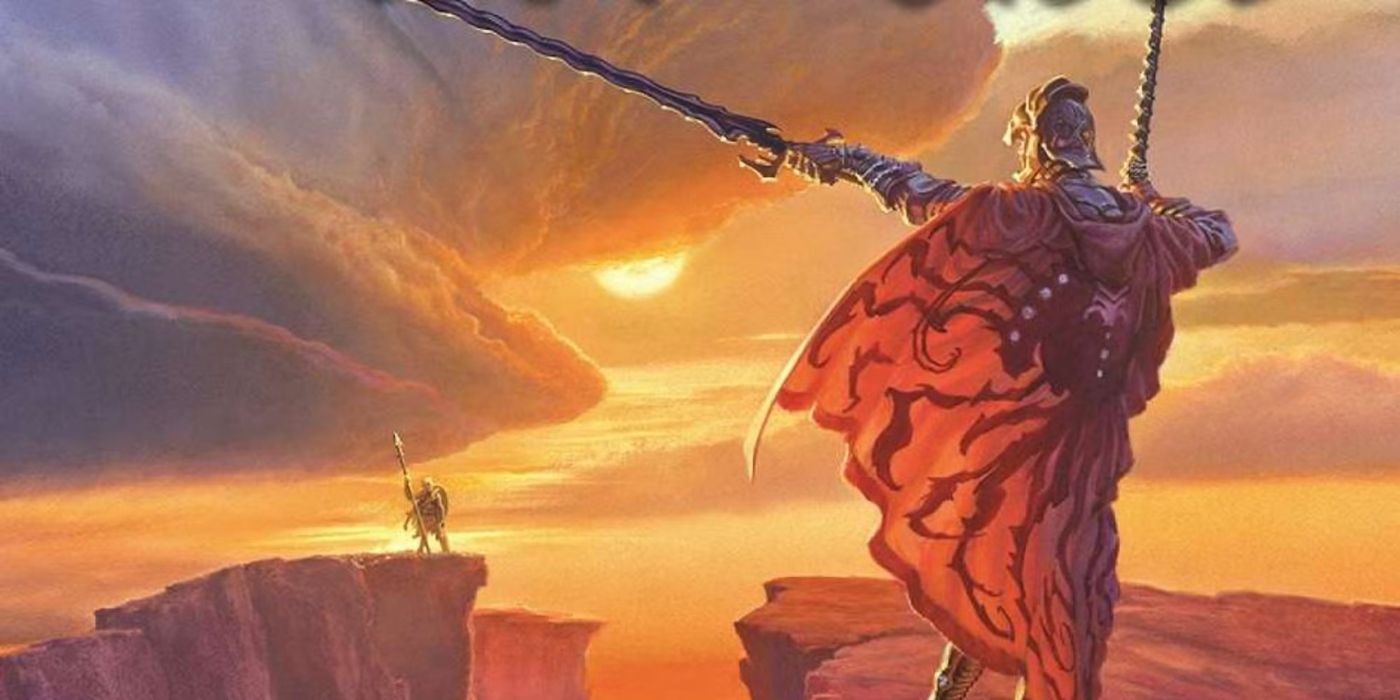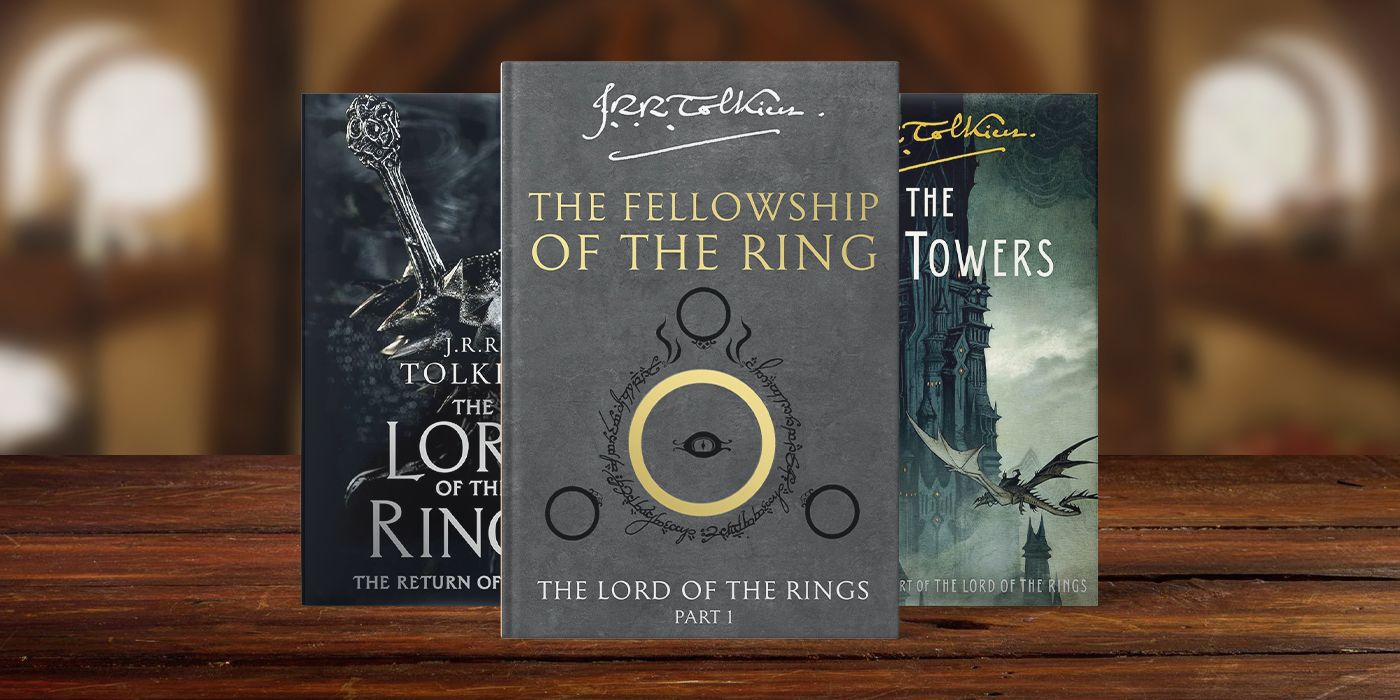When Robert Jordan published The Eye of the World in 1990, the first of over a dozen novels in his sprawling, best-selling The Wheel of Time series, you wouldn’t be remiss in mistakenly assuming that this new-kid-on-the-block author was copy-pasting his way through a regurgitation of his main inspiration — that being The Lord of the Rings trilogy by the king of fantasy himself, J. R. R. Tolkien. Protagonist Rand al’Thor, an unassuming young man from a peaceful village, embraces his destiny by opposing the Dark One; aiding Rand in his noble quest are his four close friends, a taciturn warrior-king, and an enigmatic sorceress. The more The Wheel of Time developed with each consecutive book, however, the more Jordan established his thrilling tapestry of good and evil as a seminal work of high fantasy in its own right. Between his intimidating imagination, outstanding characterization, and a word count too vast to contemplate, Jordan’s magnum opus defined a generation.
Prime Video’s small-screen adaptation of the same name, which premiered 32 years after The Eye of the World first hit bookshelves, has earned widespread acclaim for closely matching Jordan’s daunting vision. Over the three seasons The Wheel of Time currently has under its belt, the streaming series has introduced fresh eyes to the late author’s world. But whether you consider yourself a fan of the television series, the original written version, or both — if you’re searching for your next read, look no further. Just like the turn of the eponymous Wheel, there’s no shortage of tales that evoke Jordan’s best traits.
10
‘The Name of the Wind’ (2007)
Written by Patrick Rothfuss
The Name of the Wind, book one in Patrick Rothfuss’ planned trilogy, The Kingkiller Chronicle, takes place in Temerant, a land where people master magic by following strict academic training. This rigidity contrasts with Temerant’s folklore, which posits that individuals can tap into an esoteric source known as “the Name of the Wind” and bend the Wind’s magic to their will. Kvothe, the nation’s most skilled and infamous triple threat — warrior, bard, and arcanist, plus maybe an assassin of kings — has gone into hiding as a humble innkeeper of no great renown. However, Kvothe agrees to spend three days reciting his life’s exploits.
Appropriately, given The Name of the Wind‘s story-within-a-story framing device, Rothfuss’ debut novel concerns itself with the ways fiction shapes our lives as much as it evokes high fantasy traditions. Like The Wheel of Time‘s earliest installments, certain characters initially feel like carbon-copy clichés on parade. And just like Jordan’s later books, Rothfuss veers away from our formulaic expectations, making The Name of the Wind read like a celebratory deconstruction of all the fantasy that came before. This tale hides lush, meticulous minutiae inside every corner of its grand adventure — ranging from Kvothe’s happy childhood in a traveling troupe, to the university where he’s an adept student, and to the elusive Name of the Wind itself. It’s marvelously easy to get lost in Rothfuss’s enthralling creation, especially considering his lyrical prose.
9
‘The Shadow of What Was Lost’ (2014)
Written by James Islington
In the world of Andarra, sorcery has always been bifurcated into distinct social groups. The Gifted create magic by tapping into their life force, also called Essence. The Augurs, meanwhile, access an unknown reserve outside themselves, and channeling this volatile source ultimately drives them mad. Andarra’s subsequent civil war ends in the ruthless genocide of the Augur people, while the Gifted’s abilities are severely restricted and monitored. Long after this schism, Davian, a gifted student at a government-approved magical university, must flee for his life once he discovers his forbidden Augur heritage.
Critics and readers alike have praised the opening volume of James Islington‘s The Licanius Trilogy as a worthy successor to Jordan’s oeuvre. Indeed, The Shadow of What Was Lost kickstarts an ambitious and elaborately constructed series grounded in foundational texts like The Wheel of Time. As Davian’s eyes open to Andarra’s various magical castes, which include how to siphon power from unconventional resources, a growing threat rises — a dark enemy held at bay for several thousand years and moments away from clawing through a weakened Border. Accompanied on his winding journey by his friends, each of whom unlocks their own specialized abilities, Davian’s group encounters ancient artifacts, the reincarnation cycle, and an ominous truth — that no matter their positive intentions, these characters are equally capable of being heroes or villains destined to doom everything they touch.
8
‘The Rage of Dragons’ (2017)
Written by Evan Winter
Growing up as an avid fantasy reader, The Wheel of Time was one of Evan Winter’s north stars. When his son was born, a truth Winter already knew gained pinprick-sharp clarity — those formative books he spent his summers devouring rarely, if ever, featured Black protagonists. Moved to apply his perspective as a Black man with South African heritage, the result was The Rage of Dragons, the introduction to The Burning series. Winter’s titular dragons are equivalent to nuclear weapons, used only as a last resort — and they can only be commanded by women imbued with the rarest of divine magics. Among the Omehi, these sorcerers are dubbed the Gifted. Equally scarce are gifted male Omehi, whose inhuman strength allows them to forge themselves into living weapons.
The Gift-less Tau is a common-born boy living with his father in their small town. His only aspirations include marrying his girlfriend and living a simpler life than their perpetually tormented kinsmen, all of whom are conscripted into a war against the Omehi’s invading oppressors. When his plans dissolve to ashes in his mouth, Tau elects to transform himself into a weapon through willpower alone. Unlike The Wheel of Time‘s meditative pacing, The Rage of Dragons‘ breathless momentum is as swift and blistering as an inferno. However, Winter and Jordan excel in the same tenets: intricate worldbuilding, authentic emotional development, tactical-based combat, and a painstaking web of systematic disparity, imperialism, and women holding considerable sociopolitical power. Plus, as Tau trains, demons whisper in his ear. We’ll leave it to you to discover whether they’re metaphorical or literal.
7
‘The Sharing Knife: Beguilement’ (2006)
Written by Lois McMaster Bujold
Absolute power corrupts absolutely, as the adage goes, and said corruption always affects the innocent, too. When the most powerful magic users in Lois McMaster Bujold‘s The Sharing Knife universe pursue their insatiable lust for power beyond all common sense, they reset their technologically prosperous civilization back to a post-apocalyptic landscape resembling the 19th century American West, ironically referred to as the Wide Green World. Haunting this rudimentary “frontier” are Malices, a sentient parasite entity capable of absorbing, controlling, and altering the human body. Fawn, young and unhappily pregnant, faces a better life providing for herself than staying on her family’s farm. During her journey to the city, she encounters Dag, a member of the Lakewalker community who kills Malices with Sharing Knives carved from human bone and imbued with a dying Lakewalker’s essence.
Certain fans prefer The Wheel of Time‘s morally complex female characters to their male counterparts. Bujold centers The Sharing Knife: Beguilement on her heroine. Approximately the same age as Rand, Fawn is naive to the wider world but imminently resourceful, as well as curious, courageous, and headstrong. Beyond the comparable premise of a shattered post-futuristic planet, Beguilement offers something Jordan incorporates but doesn’t prioritize: romance. Dag can be compared to Lan and Fawn to Nynaeve, the latter minus the constant rage. They do have a significant age gap, which won’t suit everyone’s preferences. But when Bujold, a legend in the sci-fi community for her Vorkosigan Saga, decides to write a love story, she’s practically peerless.
6
‘The Jasmine Throne’ (2021)
Written by Tasha Suri
Two women are thrown together by circumstance and drawn together by desire in Tasha Suri‘s The Jasmine Throne. The Emperor of the Parijatdvipan Empire exiles his sister, Princess Malini, for disobeying his command to burn herself alive as a sign of her fealty. Locked inside the Hirana temple, a place of immense spiritual importance, Malini schemes to escape her makeshift prison and overthrow her authoritarian brother. Priya, one of the only survivors of a mass casualty, reluctantly becomes one of Malini’s servants after the princess’ keen eyes observe Priya’s most-guarded secret — the magic granted to her by the Hirana’s waters, knowledge that means Priya’s death sentence in the wrong hands.
A slow-burn sapphic romance, The Jasmine Throne is for the Moiraine/Siuan shippers. As Priya, a compassionate and common-born magic wielder, and Malini, an ambitious royal one breath away from supreme power, use one another to further their unspoken goals, the two women unexpectedly fall for one another. Their yearning-fueled love perfectly compliments their resoundingly sympathetic quests for personal and civil liberation, while also pushing the boundaries of moral acceptability. Suri’s prose is as luscious and cutting as a whetted blade, with thematic purpose to match: colonialist corruption, free will, religious extremism, and the gender binary, with an emphasis on women overthrowing tyrannical misogyny.
5
‘The Priory of the Orange Tree’ (2019)
Written by Samantha Shannon
Clocking in at over 800 pages, The Priory of the Orange Tree operates as a stand-alone within Samantha Shannon‘s ongoing The Roots of Chaos universe. The lurking return of the Nameless One, a ruthless and dreaded wrym, threatens Sabran Berethnet’s queendom of Inys and the sanctity of her reign. Centuries of tradition dictate that Sabran’s bloodline holds the Nameless One and other evil dragons at bay, but Sabran’s independence bristles at marriage, and the chances of her assassination are high. One of her ladies-in-waiting, Ead Duryan, is actually a secret mage tasked with protecting Sabran. Geographically separate from both these powerful women is another: aspiring dragonrider Tané, whose nation exists in harmony with their region’s pacifist dragons.
Drawn from a plethora of influences, including historical fantasy, medieval folklore, and religion (all of the above a hallmark of Jordan’s creative process), Shannon crafts opulent lore and a sinuously organic magic system. Half a suspenseful court intrigue, half a familiar quest format of heroines and heroes gathering magical artifacts to defeat their enemy, and entirely a feminist answer to decades of genre form, The Priory of the Orange Tree rotates through the eyes of four primary characters and a larger, non-point-of-view swath besides. Shannon teases out her conflict, unafraid to spend time enriching her world and its cultural, structural, and ethical divides.
4
‘Fortress in the Eye of Time’ (1995)
Written by C.J. Cherryh
Unlike Rand’s innumerable reincarnations as the Dragon Reborn, Tristen was created by Mauryl, one of the last living wizards, who casts a spell that Shapes his protégé into existence. Despite his adult body, Tristen has no personal memories or pre-knowledge about the world he inhabits. Forced to flee the only home he knows following an attack from an evil Shadow, Tristen — pure of heart, enthralled by every blade of grass, and a husk waiting to be filled with unfathomable power — wanders into the nearest city and crosses paths with Prince Cefwyn, heir to the throne.
Like most swords-and-horses (and there are plenty of each here) high fantasy, Tristen’s self-discovery throughout C. J. Cherryh‘s Fortress in the Eye of Time is characterized by the fraught tension between destiny and choice. As he investigates his purpose, shadows haunt an abandoned fortress, politicians connive, and Tristan and Cefwyn each question what defines humanity. Cherryh, a pillar of the sci-fi canon, demonstrates a remarkable command over language, atmosphere, and concept, and her lived-in world proves she thoroughly understands the genre to which she’s contributing.
3
‘The Hundred Thousand Kingdoms’ (2010)
Written by N.K. Jemisin
Not long after her mother’s death makes Yeine Darr the leader of her matriarchal society, her grandfather, the king of the ruling Arameri people, stuns Yeine by naming her one of his potential heirs. Yeine grapples with the stark disconnect between her grief and how that loss embroils her in a cutthroat succession competition inside the aerial city of Sky, the court and home of the Arameri — a people whose privilege permits them to enslave the gods. Although subservient to the humans they created, these deities are willing to use Yeine to achieve their freedom. Meanwhile, Yeine’s relatives crave the throne and want her claimant eliminated.
Although The Hundred Thousand Kingdoms by N.K. Jemisin might be the debut novel of one of our modern genre greats, you can hardly tell between Jemisin’s sterling prose and her unshakable grasp of rhythm, style, and identity. Jimisin’s The Inheritance Trilogy and The Wheel of Time aren’t a one-to-one match, but the former functions in conversation with Jordan and his peers as a 21st century fantasy novel written by a Black woman. Just like her heroine wants to topple Sky’s labyrinthine world order, Jemisin forges new paths tinged with the familiar.
2
‘The Way of Kings’ (2010)
Written by Brandon Sanderson
Brandon Sanderson‘s name should be familiar to The Wheel of Time aficionados; Jordan’s widow handpicked the author to complete her husband’s written legacy after his death. A fantasy giant in his own right, Sanderson’s The Way of Kings opens the prolific author’s most classically high fantasy work, The Stormlight Archive. A routine series of Desolations, cataclysmic storms caused by Voidbringers and eased by the Knights Radiant, have marked the Roshar continent’s turbulent history. Little is known about the mythical Last Desolation, the vanished Knights, or the secrets behind Roshar’s magic. Despite not seeing a new Desolation in four millennia, the world doesn’t know respite, beset as it is by wars driven by ageless human faults.
Detail and consistency were two of Jordan’s strongest suits — not just required puzzle pieces like history, philosophy, and culture, but weather, ecology, and how each element affects the other like ripples in a pond. Sanderson’s Cosmere universe does the same, ensuring Roshar thrives like a living thing from the start of this doorstopper-sized book to the end. Similarly, The Wheel of Time‘s cast might widen with each installment, but The Way of Kings immediately operates with eight primary point-of-view characters.
1
‘The Lord of the Rings’ (1954–1955)
Written by J.R.R. Tolkien
How can you go wrong with the grandfather of fantasy? The Lord of the Rings might seem like an obvious choice for a list like this, especially given the manifold ways Jordan modeled The Eye of the World after Tolkien’s blueprint. But Tolkien’s lifework, informed by his years as a soldier in World War I, his scholarly pursuits, his love for all things green and growing, and his profound concern over the world’s increasingly perilous state, is a crowning literary achievement and a tour de force fantasy contribution of lasting value.
The tale of Frodo Baggins and the Fellowship’s quest to destroy the corruptive One Ring and deliver Middle-earth from the pestilent grip of the Dark Lord Sauron remains as perfectly gripping, imperative, and influential as the first moment it was published. Not only do the spells Tolkien’s words weave remain perfectly gripping, nothing on this list, especially The Wheel of Time, would exist without those four little Hobbits. Come for the history, stay for a transformative saga impervious to age and genre boundaries.
Source link

